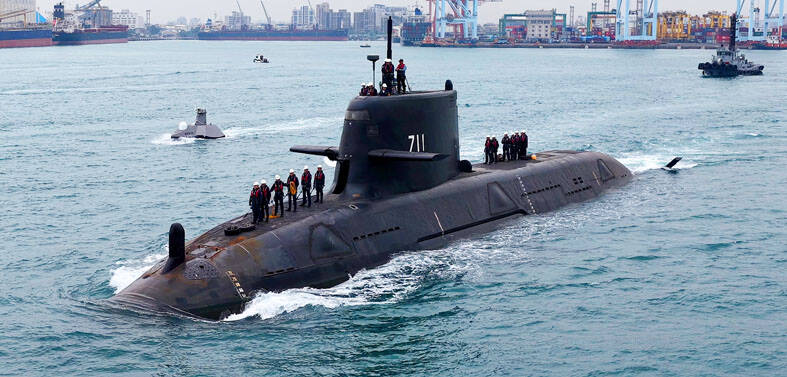The nation's forest ecosystems have been jeopardized because the amount of acid rainfall they receive now exceeds their ability to recover, the Environmental Protection Administration (EPA) said yesterday.
The EPA released a newly completed study on acid rain, suggesting that six crucial forest ecosystems have been jeopardized by excessive acid rainfall at three to 10 times higher than their tolerance.
Taking the forest in Fushan, Ilan County, as an example, EPA officials said that it now receives more than 10 times its "acid critical load," and a forest in Shanping, Kaohsiung County, receives more than eight times its critical load.
The "acid critical load" refers to the maximum amount of acid deposits that a region can receive without damage to its ecosystems.
Project investigator Lin Neng-huei (
Ecosystems that can tolerate acidic pollution have high critical loads, while sensitive ecosystems have low critical loads. The sensitivity level depends on the acid-rain neutralizing capacity of the water, rocks and soil.
"However, five out of the six forests investigated could be classified as the second level, which shows their relatively high vulnerability," Lin said at a press conference yesterday.
Lin said that when the environment fails to neutralize the acid being deposited, ecological damage inevitably occurs.
Two common air pollutants in acid rain are sulphur dioxide and nitrogen oxide. When these substances are released into the atmosphere, they can be carried over long distances by prevailing winds before returning to earth as acid rain.
"The EPA will seriously monitor acid rainfall in different regions in order to understand the possible negative impact being made on ecological systems," said Ho Soon-ching (
Ho said that Taiwan has set up many regulations to limit the use of inferior fuels for automobiles in a bid to effectively prevent air pollution. However, foreign pollutants traveling long distances from China, which has experienced rapid industrialization, contributes to more than 50 percent of air pollutants in this country.
EPA statistics show that the pH level of rainwater is about 4.9 in Taipei, 4.6 in Chungli and 4.8 in Kaohsiung. The lower the pH level of rainwater, the more acidic it is. According to the EPA, the normal pH of rainwater should fall between 5 and 6.
Lin said that a research network including scientists in the US, Japan, China, Hong Kong and Taiwan has been established to exchange critical data about pollutants causing acid rain in the Pacific region. Taiwanese researchers are calling for more countries to take part in the network in order to monitor the regional distribution of pollutants and prevent local ecological damage.

NUMBERS IMBALANCE: More than 4 million Taiwanese have visited China this year, while only about half a million Chinese have visited here Beijing has yet to respond to Taiwan’s requests for negotiation over matters related to the recovery of cross-strait tourism, the Tourism Administration said yesterday. Taiwan’s tourism authority issued the statement after Chinese-language daily the China Times reported yesterday that the government’s policy of banning group tours to China does not stop Taiwanese from visiting the country. As of October, more than 4.2 million had traveled to China this year, exceeding last year. Beijing estimated the number of Taiwanese tourists in China could reach 4.5 million this year. By contrast, only 500,000 Chinese tourists are expected in Taiwan, the report said. The report

Temperatures are forecast to drop steadily as a continental cold air mass moves across Taiwan, with some areas also likely to see heavy rainfall, the Central Weather Administration (CWA) said. From today through early tomorrow, a cold air mass would keep temperatures low across central and northern Taiwan, and the eastern half of Taiwan proper, with isolated brief showers forecast along Keelung’s north coast, Taipei and New Taipei City’s mountainous areas and eastern Taiwan, it said. Lows of 11°C to 15°C are forecast in central and northern Taiwan, Yilan County, and the outlying Kinmen and Lienchiang (Matsu) counties, and 14°C to 17°C

STEERING FAILURE: The first boat of its class is experiencing teething issues as it readies for acceptance by the navy, according to a recent story about rudder failure The Hai Kun (海鯤), the nation’s first locally built submarine, allegedly suffered a total failure of stern hydraulic systems during the second round of sea acceptance trials on June 26, and sailors were forced to manually operate the X-rudder to turn the submarine and return to port, news Web site Mirror Daily reported yesterday. The report said that tugboats following the Hai Kun assisted the submarine in avoiding collisions with other ships due to the X-rudder malfunctioning. At the time of the report, the submarine had completed its trials and was scheduled to begin diving and surfacing tests in shallow areas. The X-rudder,

DEMAND: The government should enact regulations in line with Austria and Germany to incorporate vegan nutrition into school meals, an advocate said More than 1,000 people yesterday marched in Taipei to promote veganism, calling for legislation to incorporate vegan diets into school lunches and the national net zero emissions program. Participants gathered on Ketagalan Boulevard in front of the Presidential Office Building for the march, which was organized by the Vegan Action Network (VAN). Former ambassador to Chad Chiu Chung-jen (邱仲仁), actor Yankee Yang (楊子儀) and actress Cindy Lien (連俞涵) attended the event. VAN member Marianne Chao (趙梅君) said that the campaign aimed to urge the government to promote vegan diets across schools and government agencies via legislation and national policies, which would help build